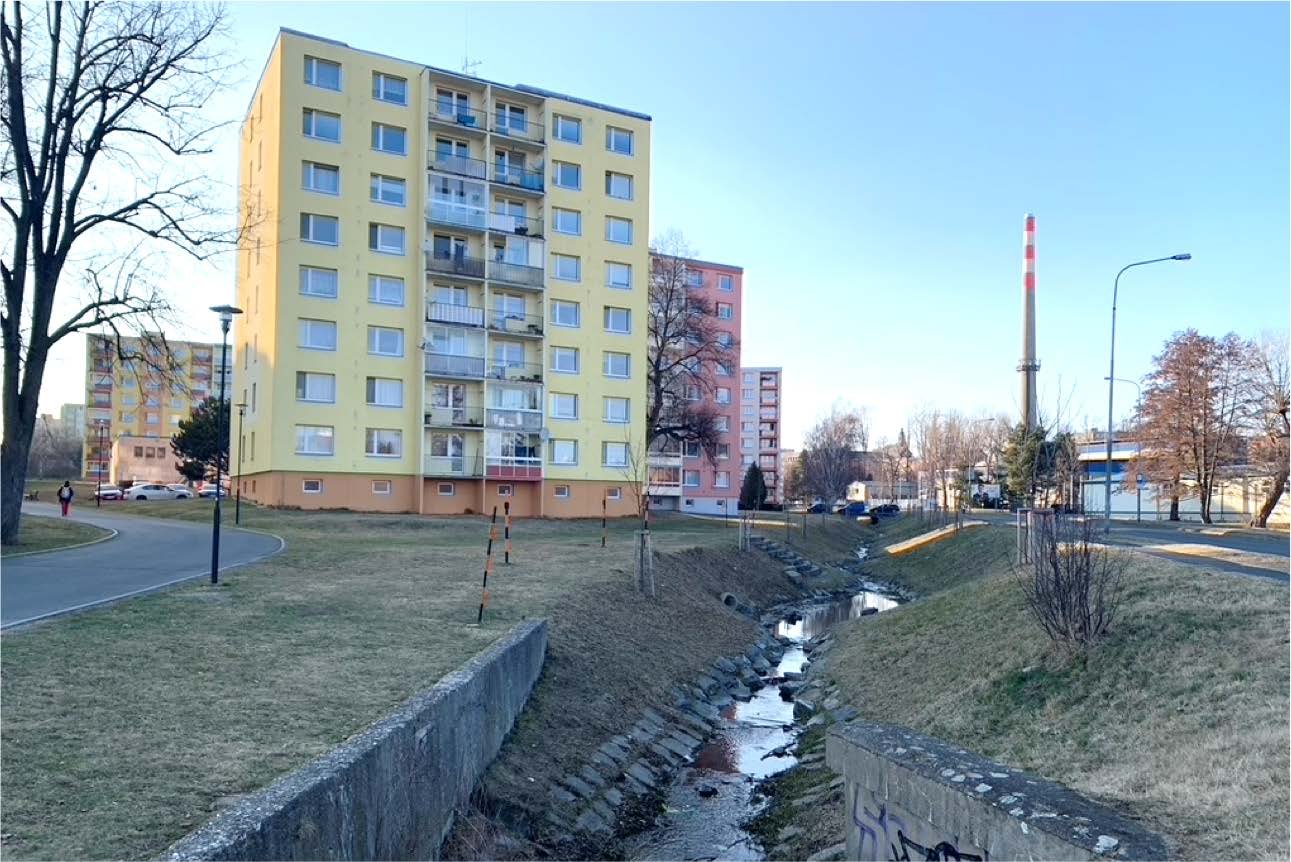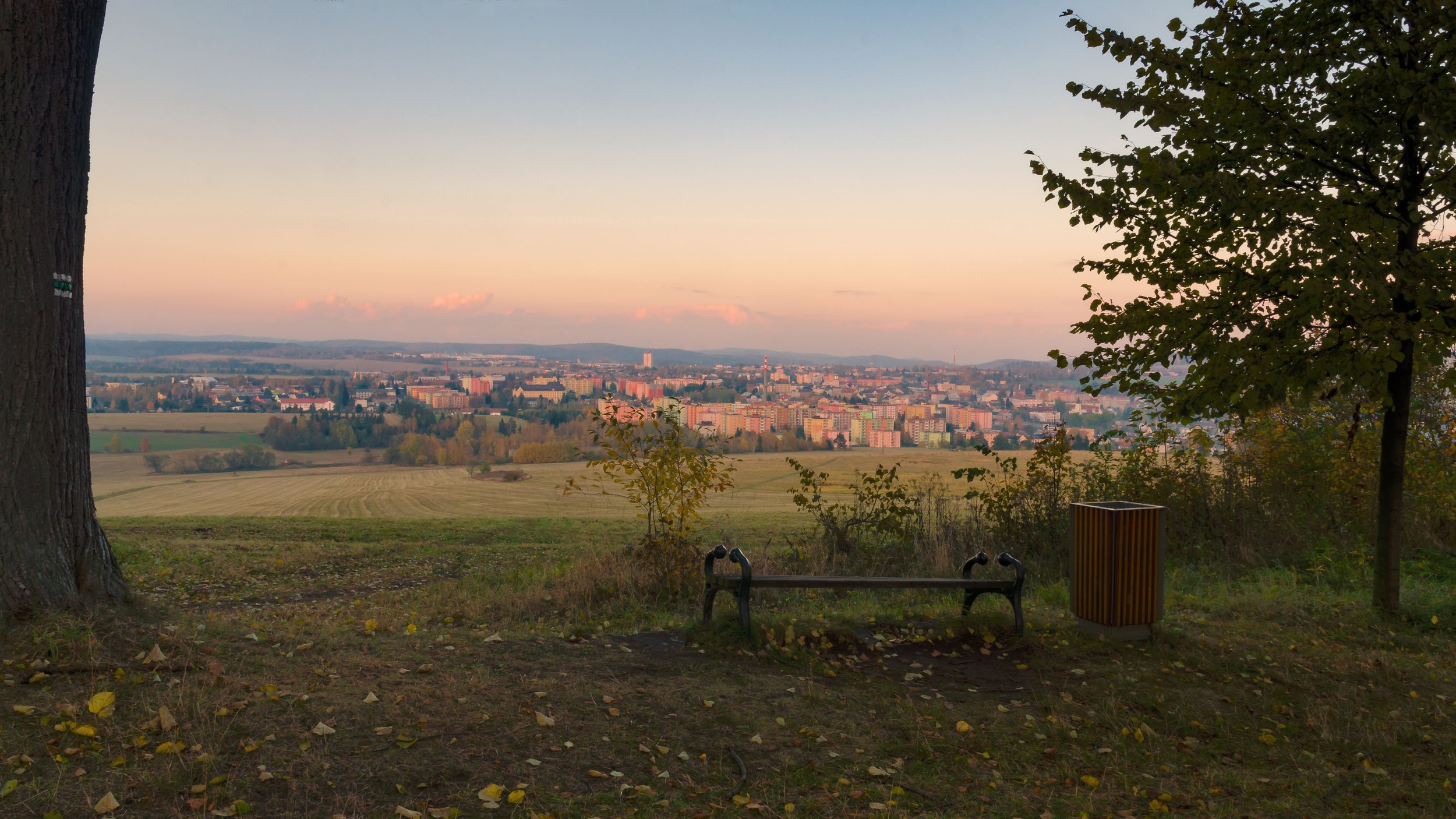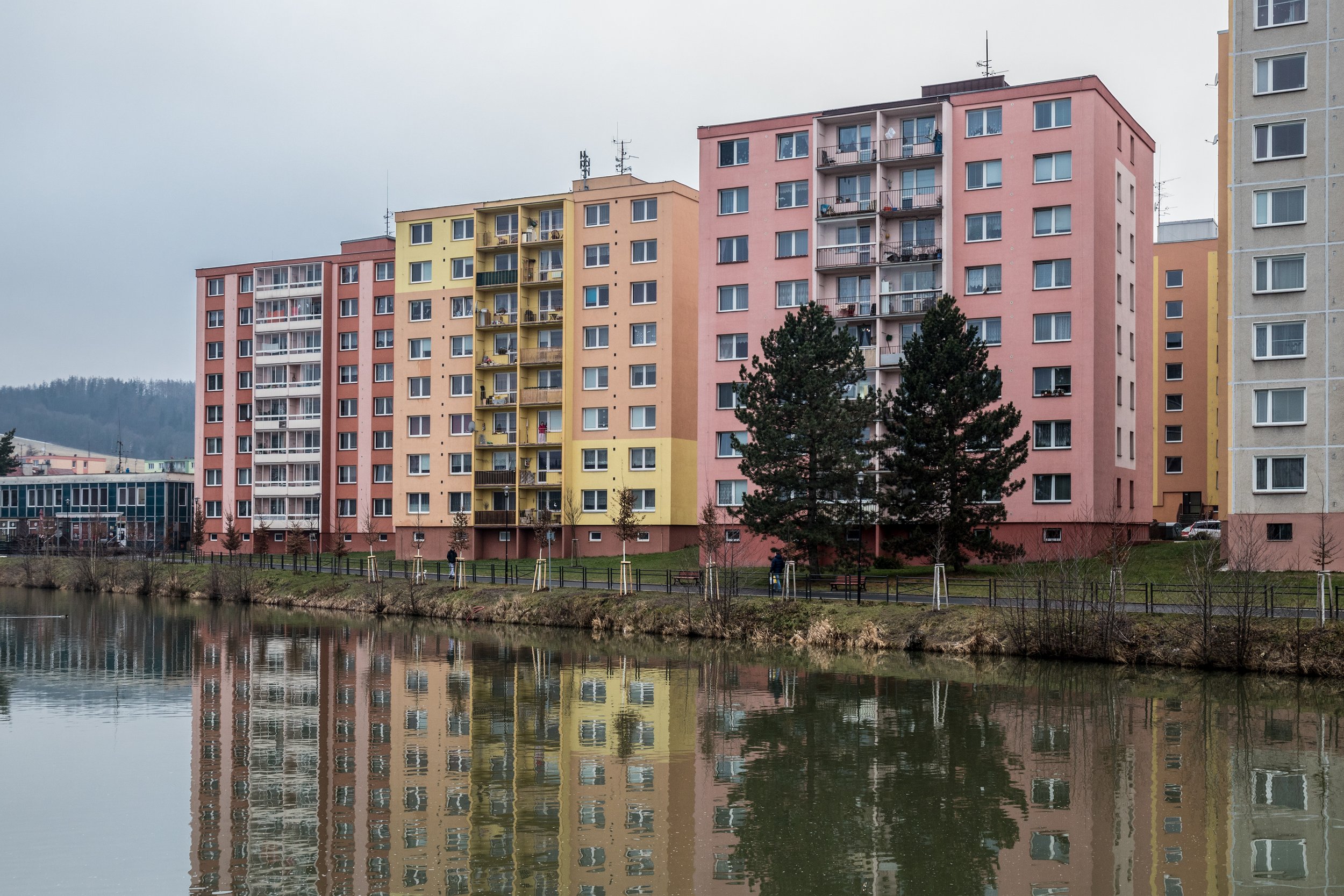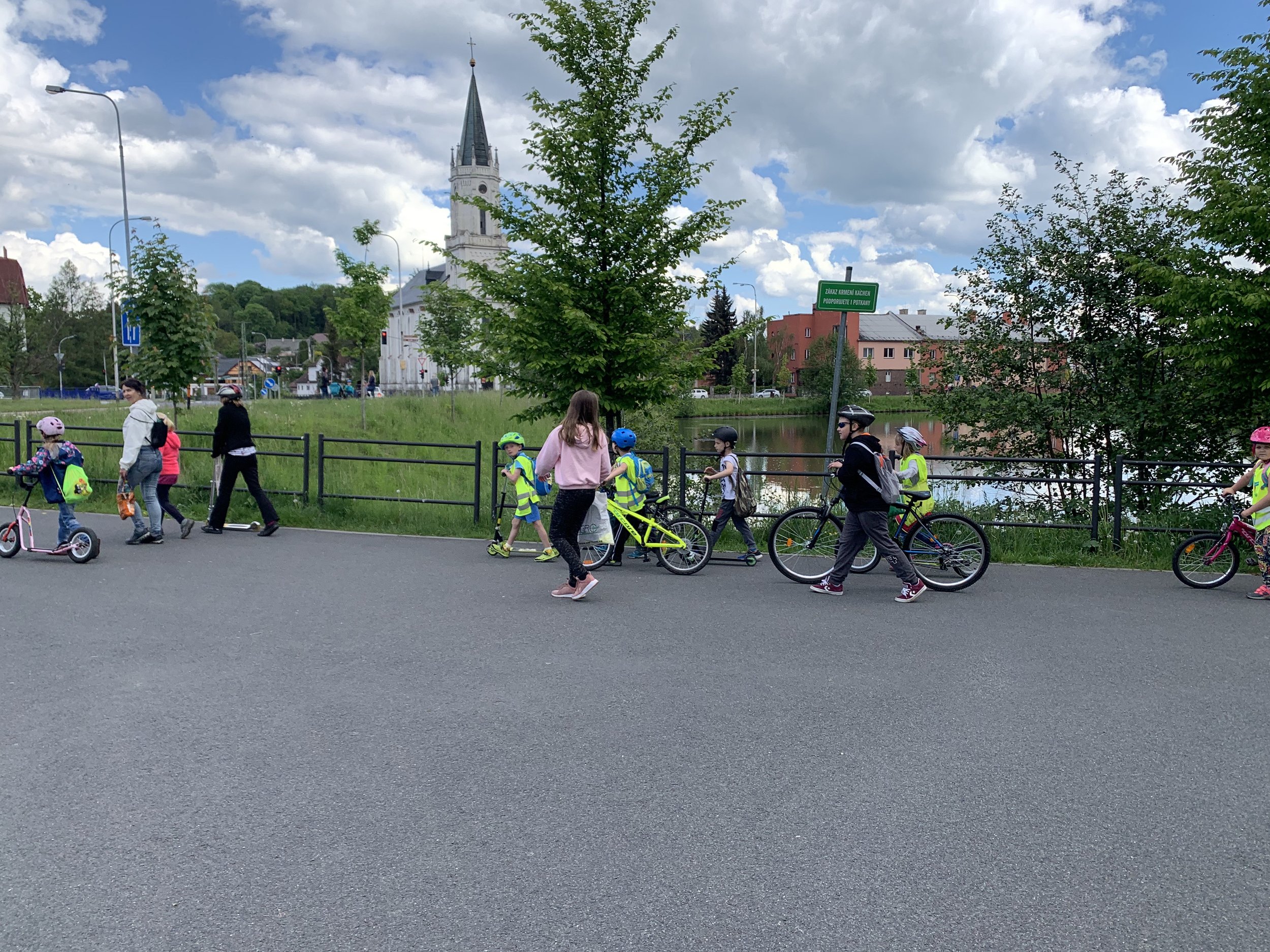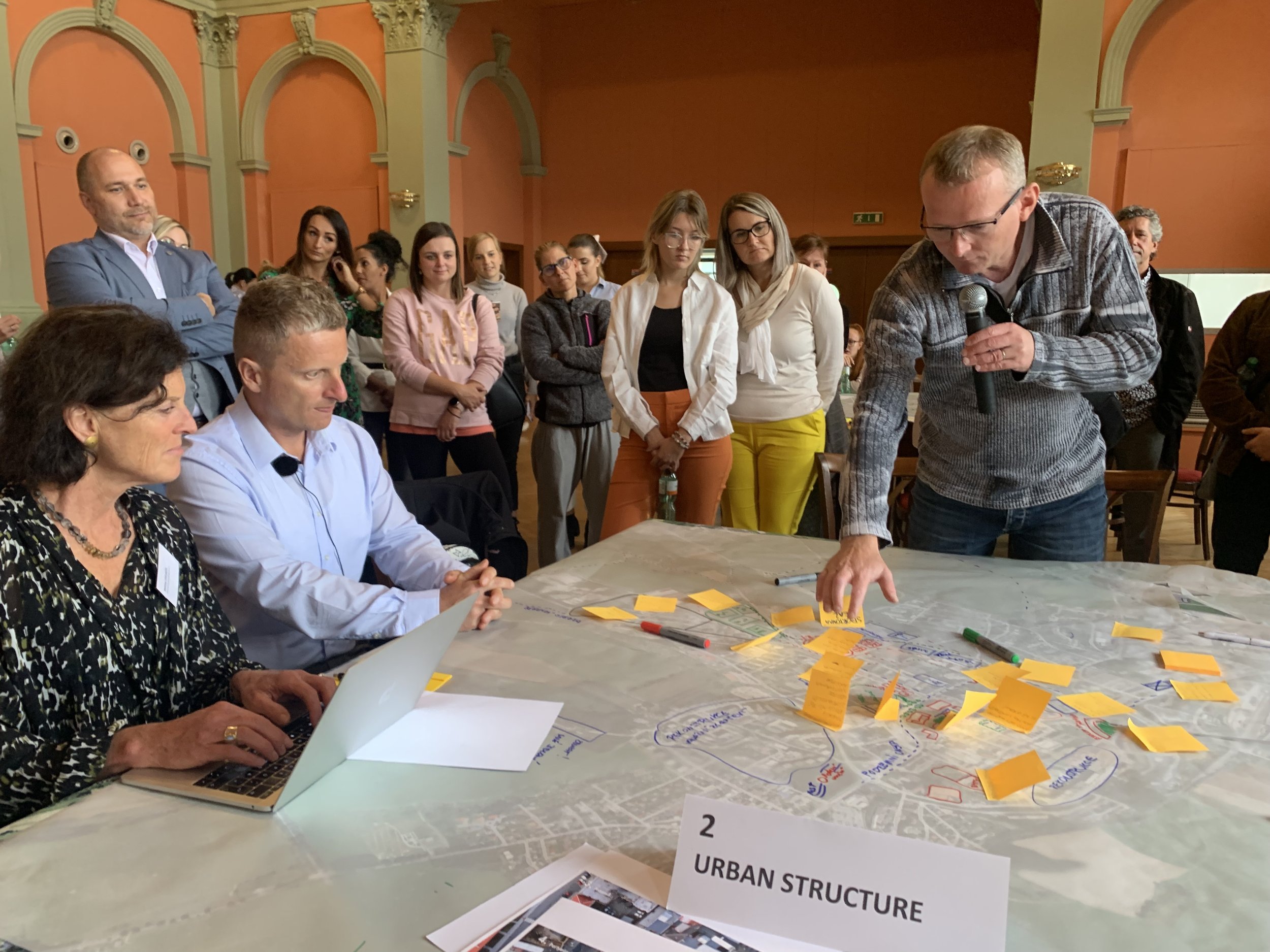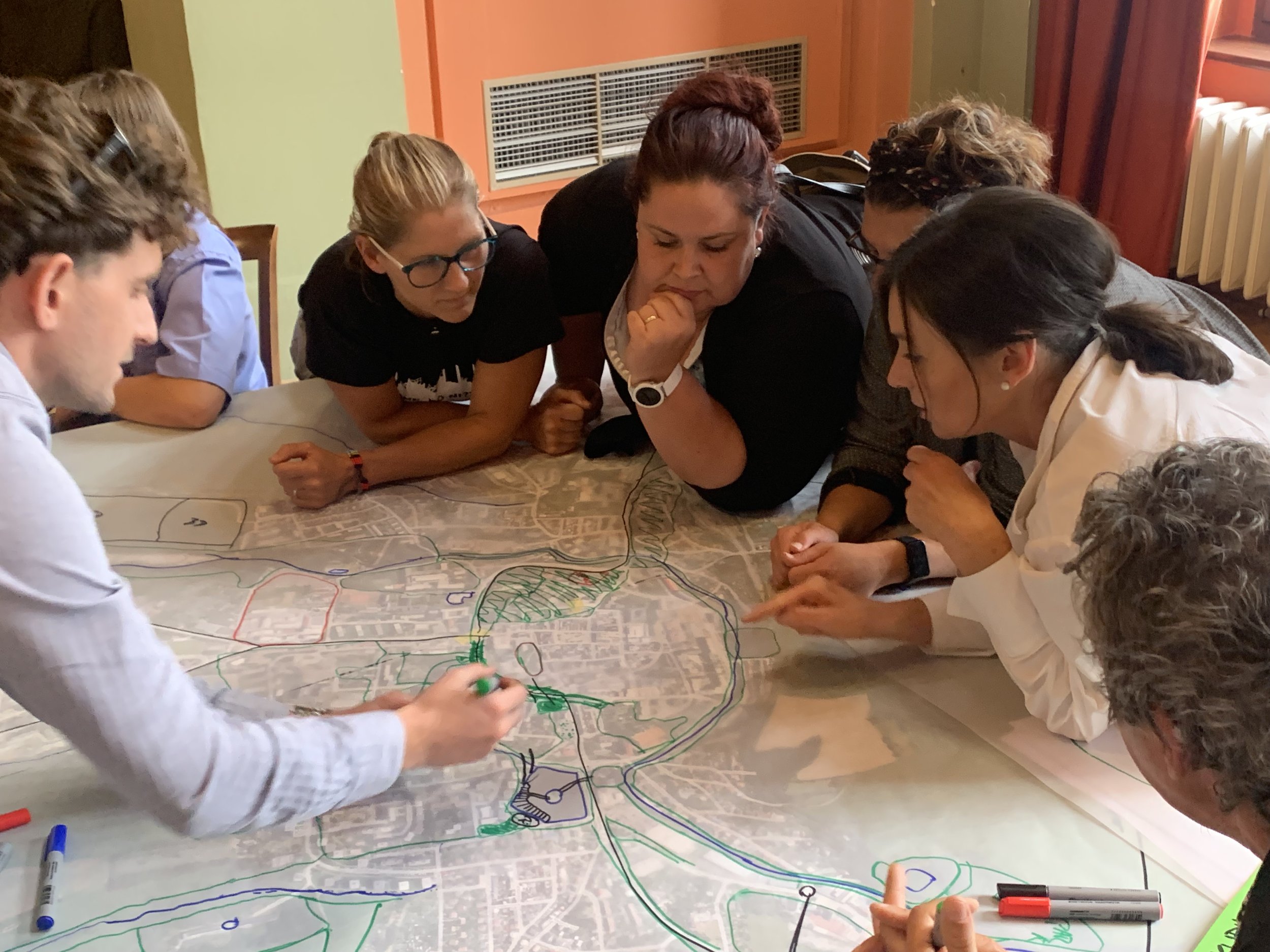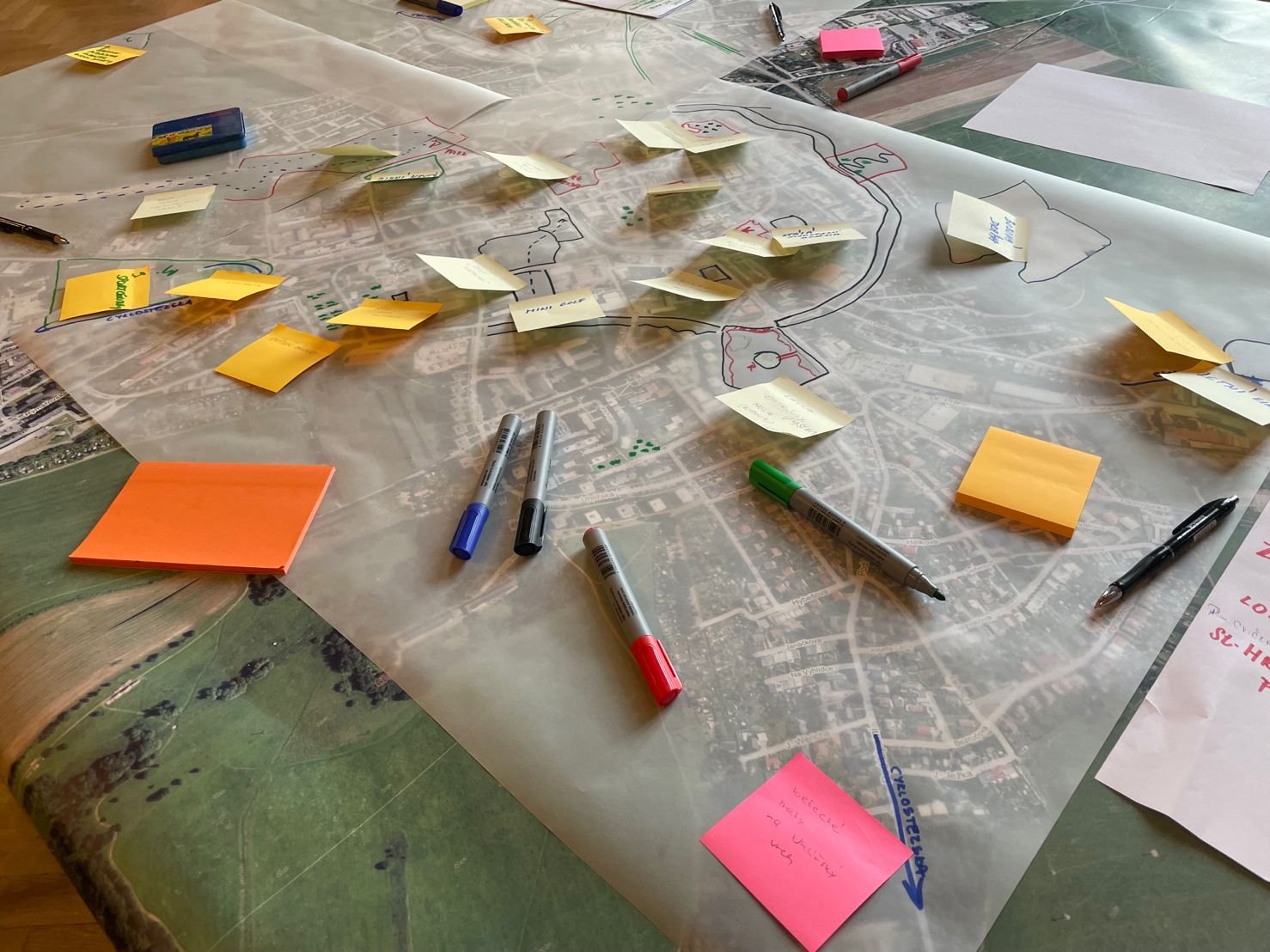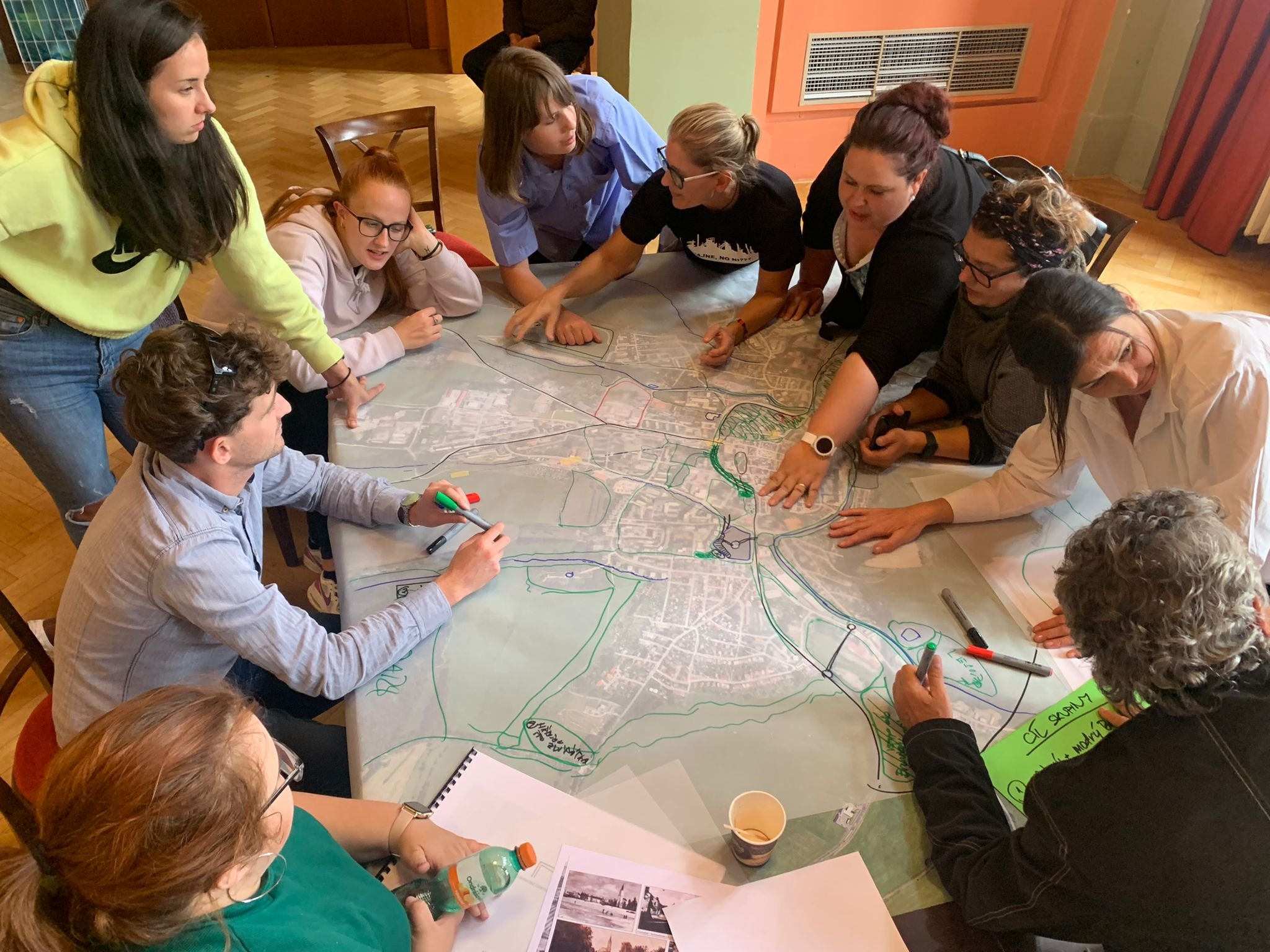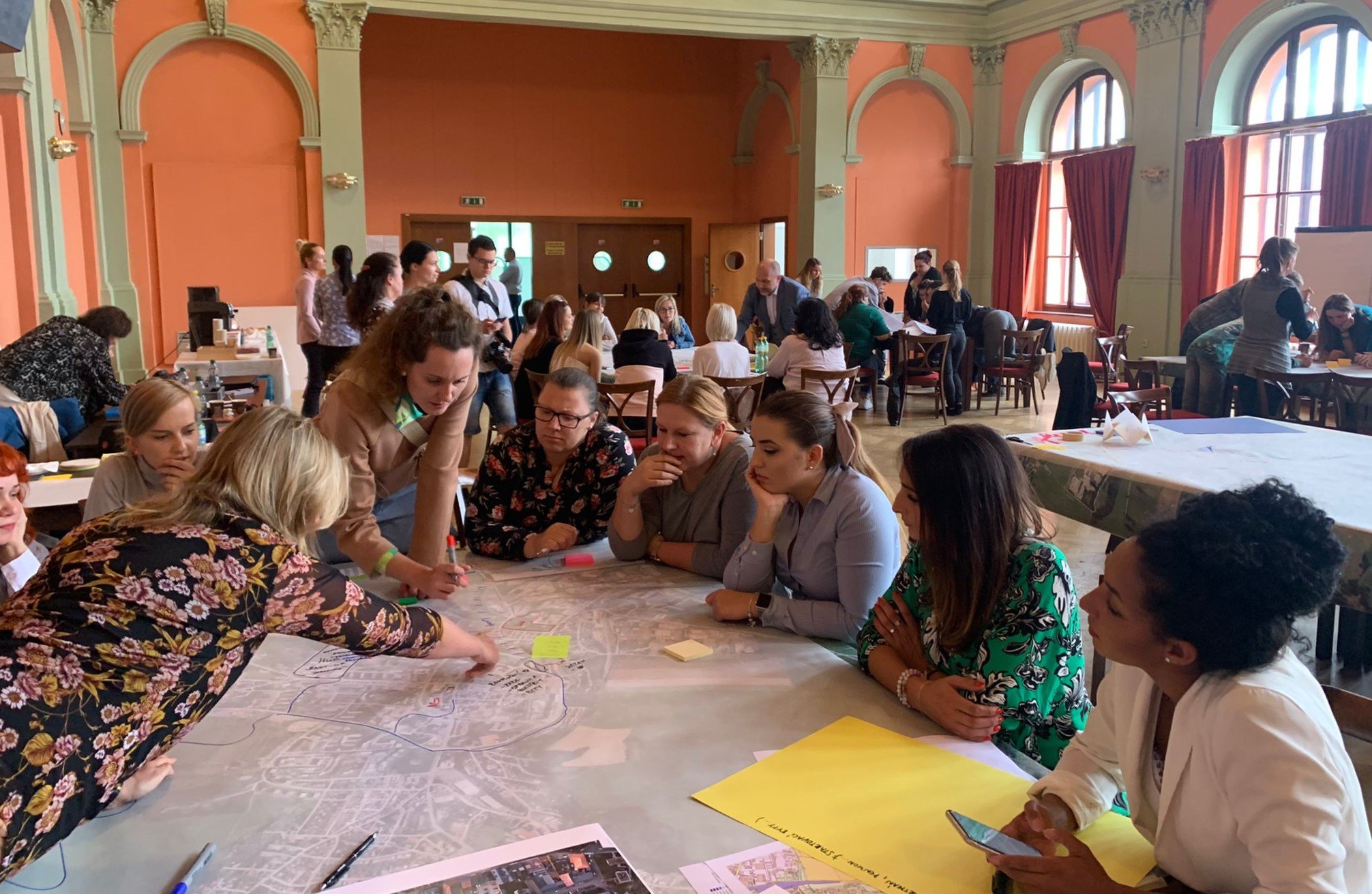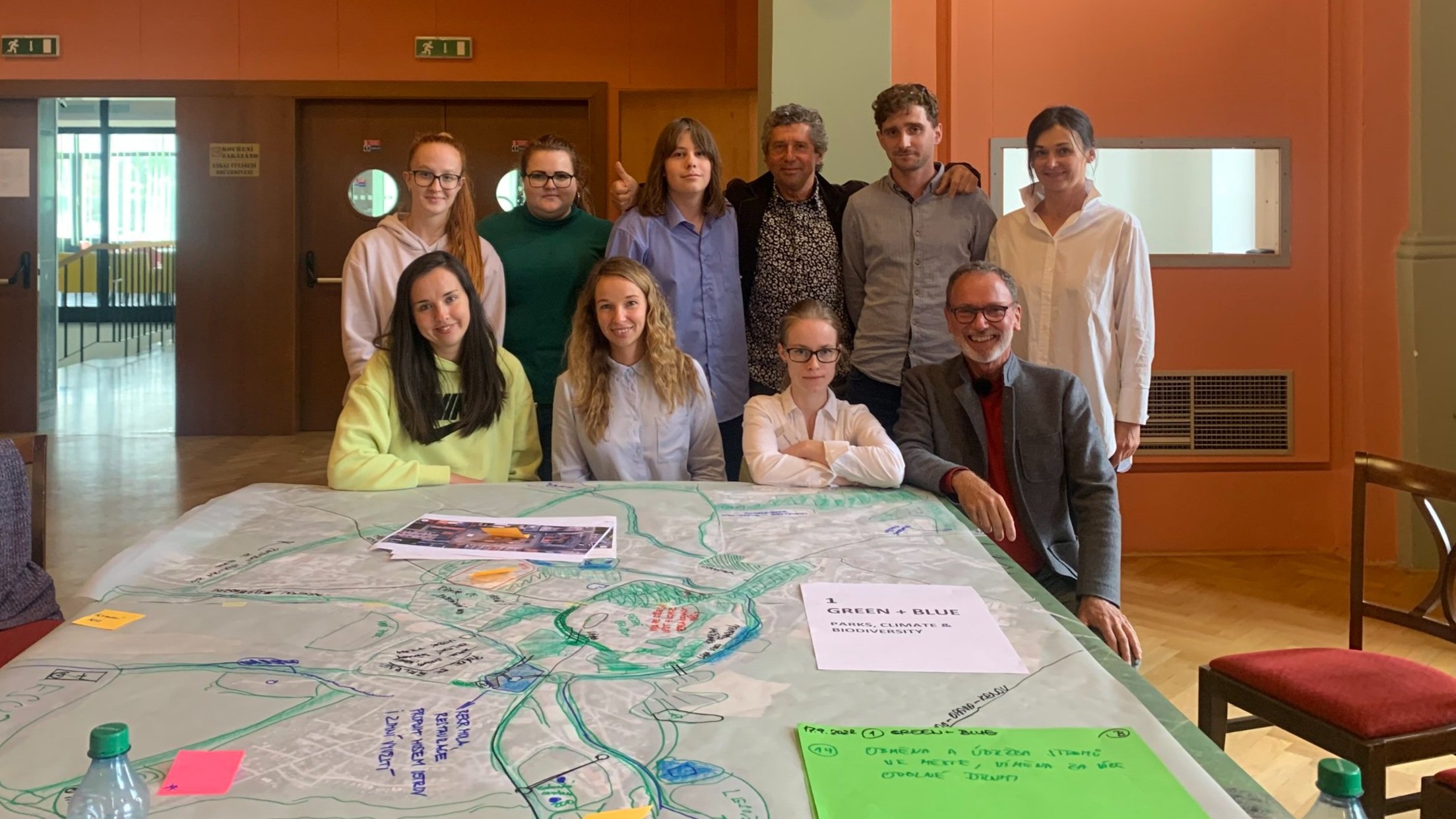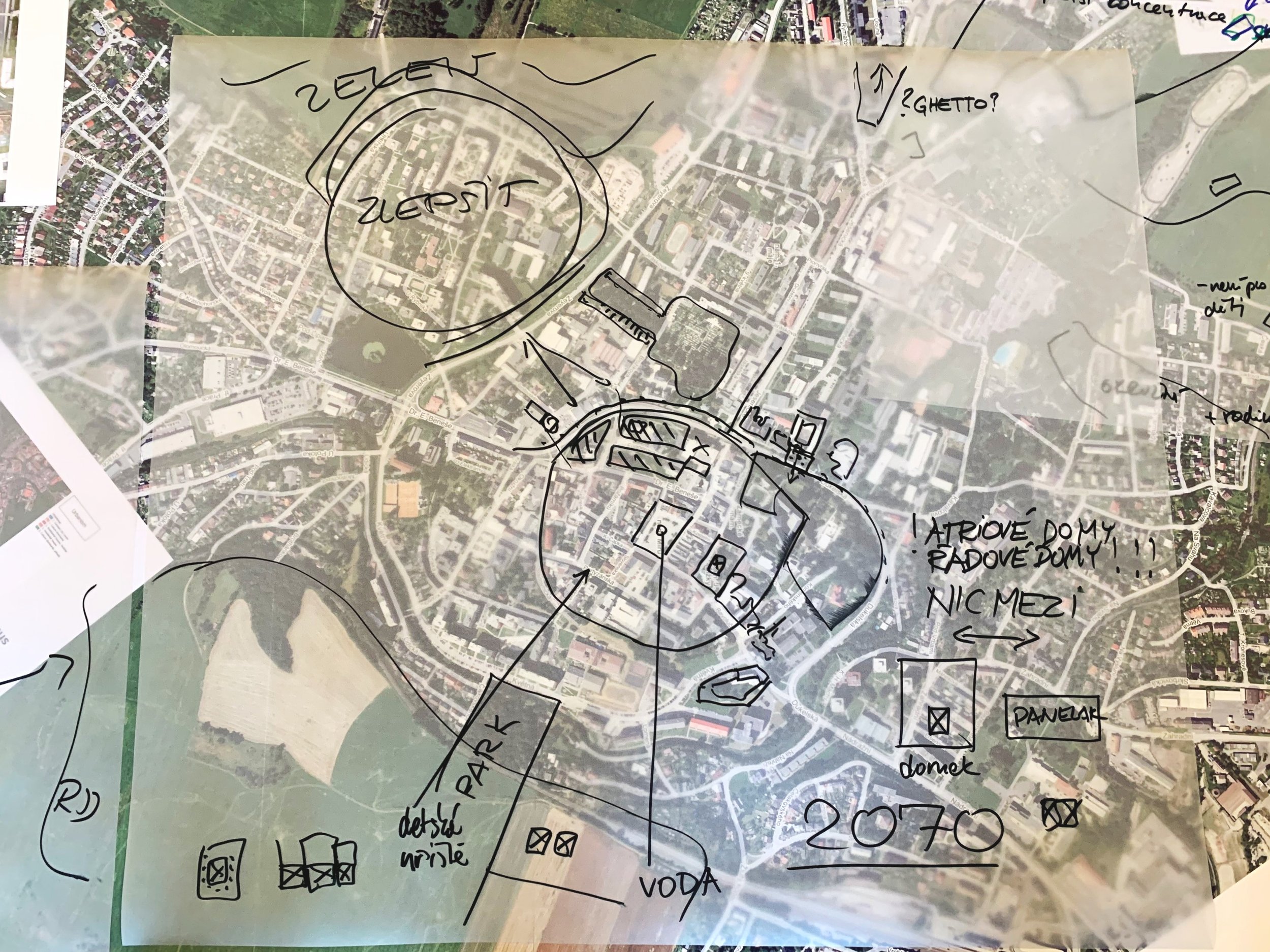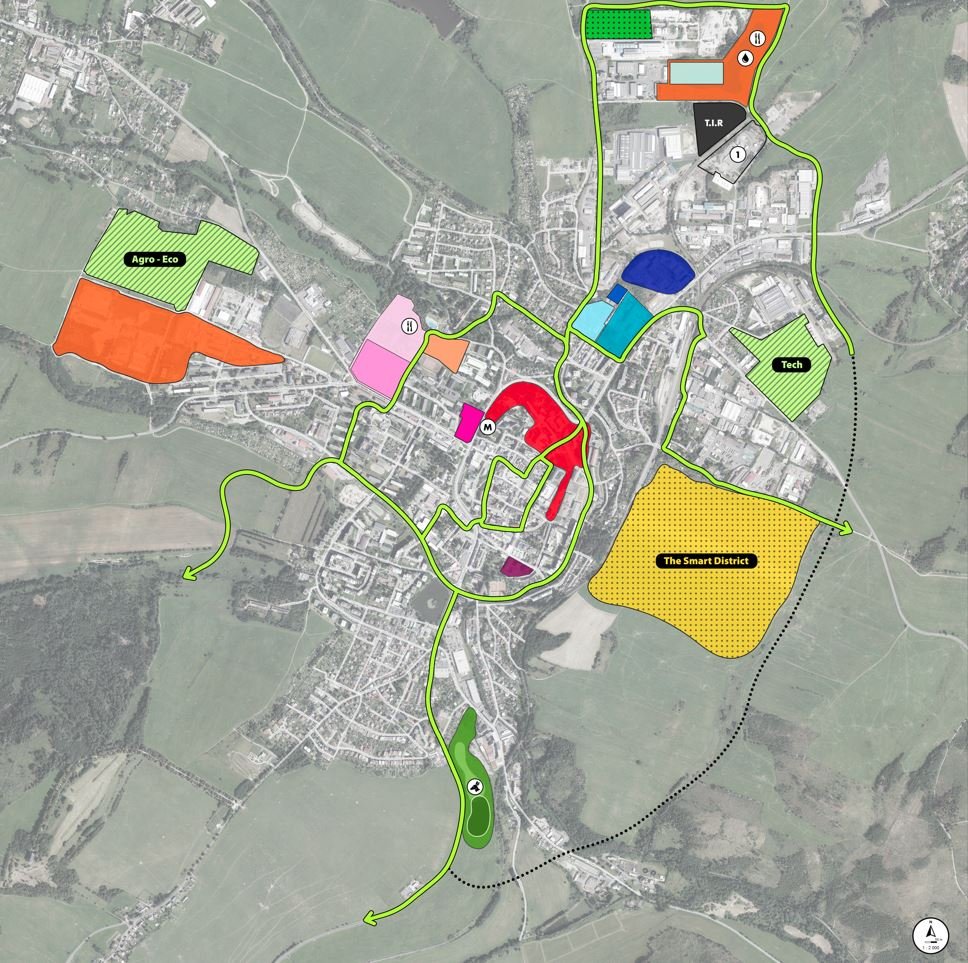
Bridging the Gap
Vision for Bruntál 2070
Bruntál, Czechia
2022
Vision of the City of Bruntál 2070
Urban planning and landscape development in Europe must address economic, cultural, social, historical, and environmental divisions. This requires not just involvement from politicians and cultural leaders but also capable planners committed to collaborative, cross-border solutions.
Balancing urban density and rural tranquility, industry and nature preservation, and cultural diversity across Europe is crucial without undermining regional uniqueness. An idea emerged at an IFLA conference in Ostrava to create a model project in collaboration with European universities, using the Czech city of Bruntál. The project has four main goals: 1: International academic cooperation, 2: Landscape architecture for small towns in peripheral locations, 3: Possible solutions for current socio-economic challenges, 4: Cultural bridges
Bruntál, a historic Czech town founded in 1213, is one of the country's oldest royal towns. Herbert Dreiseitl's family has deep roots in the city, tracing back to 1600, though there was a significant population displacement at the end of World War II. Today, Bruntál boasts around 16,000 inhabitants, primarily of Czech descent, whereas in 1930, it had 9,500 residents, with a predominantly German population. This town is situated in the Czech Silesia region and is known for its well-preserved historic center, legally protected as an urban monument zone. Despite its beauty, Bruntál is quite isolated and remote.
DREISEITLconsulting GmbH
Community Participation, Teachings and Workshop, Urban Planning, Resilience and Sustainability, Water Sensitive Urban Design, Blue-Green Infrastructure
Location
Bruntál, Czechia
Collaborators
Mayor of Bruntál: Petr Rys, Kokes Partners: Přemysle Kokeš, Zuzanna Rucka, Magdalena Kokesova, Kristyna Teskova
Client
Město Bruntál
Timeline
2022 - 2023
Status
Completed

A three-day visit to Bruntál (28-30 March 2022) seamlessly blended heritage, culture, and urban development support, honoring Herbert's roots while envisioning a brighter future for the city. It exemplified the transformative potential of collaboration and shared vision in urban development.
In the company of architect Přemysle Kokeš, city representatives, and students from Bruntál's Central Industrial School and Business Academy, a thought-provoking discussion emerged, generating a plethora of ideas that could serve as the foundation for bringing the vision named "Bridging the Gap" to life.

To engage with the Bruntál community, the initial phase of the involvement process began with an online survey, in which more than 700 individuals from various sectors, including industry, business, commerce, youth, and residents, participated.
The majority of survey participants expressed a preference for initiatives that prioritize environmental care, climate action, the enhancement of cycling infrastructure, and the construction of new housing.
What are some of the actual challenges that Bruntál is facing?
A Remote Place
Population in the city is on the decline, resulting in an increase in the average age of residents. Job opportunities are scarce, primarily due to the closure of most industries since 1989. Currently, the city's economic landscape is characterized by the presence of a limited number of metal and chemical industries.
Urban Infrastructure
Deserted structures, vacant areas, a dearth of street activity, and insufficient sustainable infrastructure. The absence of climate resilience and adaptation guidelines compounds the issue. The city is divided by excessive traffic congestion, further impeding walkability and bike-friendliness.
Marginalized Communities
Disruption in the transmission of cultural knowledge and fractured narratives. Is the situation for Roma Gypsies in Bruntál defined solely by conflicts with no prospects for improvement? Strained relationships and hostilities among the local population.

In the latter phase of the engagement process, politicians, government officials, and the general public actively participated in an interactive 3-day workshop (16-18 Sep 2022). This resulted in the exploration of five key topics:
1. Blue and Green
2. Urban Development Architecture
3. Mobility and Traffic
4. Life Value (Youth and Culture)
5. Future Economy
The "Impact Orientation" approach, along with our strong personal belief, emphasizes that for a plan to gain widespread support, citizens must actively contribute to goal-setting and stay informed about progress and outcomes throughout the planning, execution, and assessment stages. This ensures broad community identification with the plan. Furthermore, younger generations will essentially incorporate this plan into their life trajectory in Bruntál. For these reasons, our strategy actively engages politicians, municipal authorities, other relevant institutions, and citizens of all age groups.








